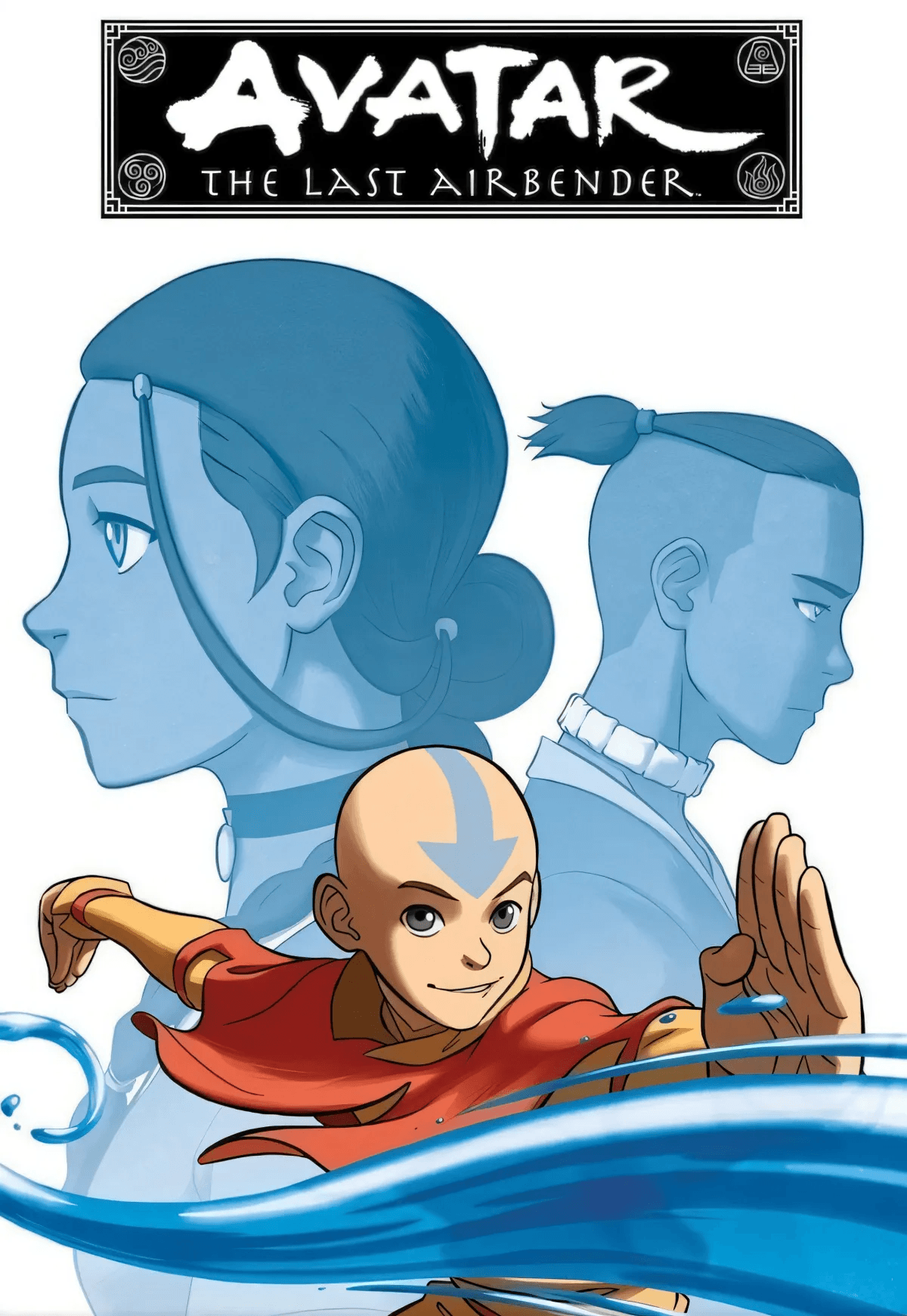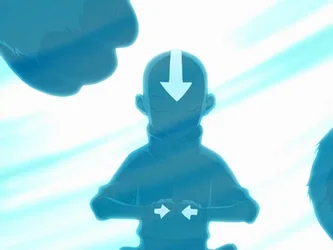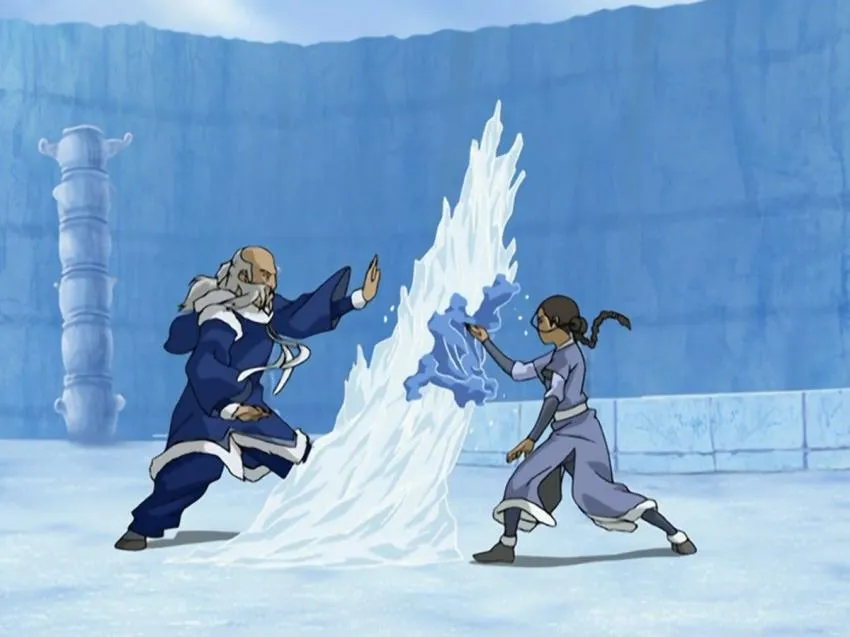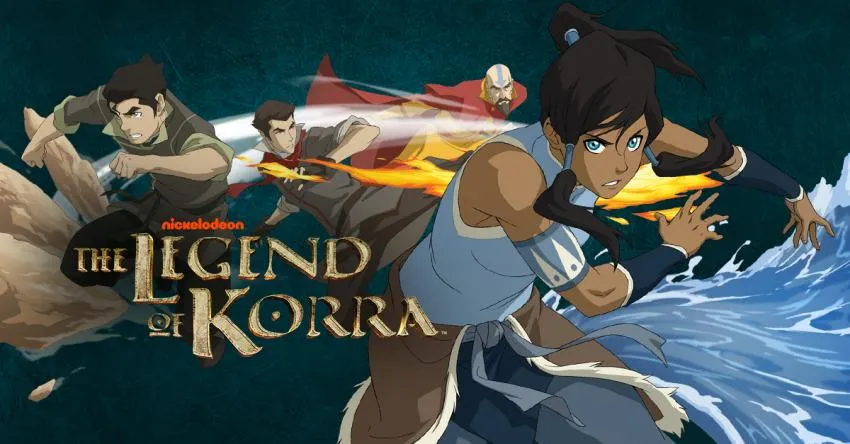Themes From The Avatar Universe That Prove The Shows Aren't Just For Kids
Nickelodeon is world-renowned for being known as a children's TV station. With famous shows like Spongebob, ICarly, and Fairly Oddparents all being targeted to younger audiences. They did create another channel where they released shows targeting a bit older audiences.
However, two shows released in Nickelodeon's tenure on the air that is more than meets the eye. These two shows are Avatar: The Last Airbender and The Legend of Korra. They were both created by Michael Dante DiMartino and Bryan Konietzko.

Avatar: The Last Airbender was initially released in 2005 on Nickelodeon and followed the adventures of, as the title suggests, the last Airbender named Aang. It takes place in a world where humans can manipulate four main elements, earth, fire, air, and water. Each element comes with a nation representing it—The Air Nomads, Northern and Southern Water Tribes, Earth Kingdom, and Fire Nation.
The Avatar is born and is the only person able to master all four elements, along with their duty to help keep the world in balance. In fact, once the Avatar dies, they are reincarnated into the next nation; for example, Aang is an Airbender, but in Legend of Korra, the protagonist Korra is a Waterbender. The Avatar after Korra will be an Earthbender and, after that, a Firebender.
Aang is the Avatar, but he is just a goofy, loveable kid who has just woken up from a 100-year sleep frozen in ice, unaware of how long he's been gone, and completely unaware that his entire race and culture has been killed while he's been trapped in ice.

Genocide is one of the darkest themes shown in the original Avatar show. While Aang had tried to escape from his responsibilities as Avatar, the Fire Lord, or leader of the Fire Nation, used the power of a comet that enhanced the powers of a Firebender to wipe out the entire Air Nation in order to kill the Avatar.
Aang then has to cope with this loss, all while thinking he was asleep for a couple of days at best, and well, he does not take the news particularly well. His anger causes him to go into the Avatar State, an ability in which the Avatar can access all the knowledge of their past lives to use it in battle. When accessing the Avatar State, Aang almost launches his friends off a cliff.
A prominent theme in the first season would be women's empowerment. It is smaller compared to some of the themes that are present in all three seasons of the show, but it still makes an impact. Aang's friends, and the people that discovered him, are two Southern Water Tribe siblings named Katara and Sokka.
Katara is the last Waterbender in the Southern Tribe, and Sokka is a non-bender but is the only male left in their village because all of the adult males went off to fight in the 100 Year War started by the Fire Nation. In the very first episode, his sexist comments towards his sister actually spark the entire event of the show. He gets her so riled up that she accidentally cracks open the iceberg that was containing Aang open.
Sokka gets called out again when they visit Kyoshi Island, an island created by one of Aang's past lives. They have a fighting group called the Kyoshi Warriors, and Sokka automatically is offended when they get captured by a bunch of girls, as he delicately said in the show. After a few more sexist remarks and an attempt to fight with the leader of this group, Suki, Sokka swallows his pride and admits that they were just as formidable as him in combat.
In season one, the last major sexist event involves Katara and Aang's attempt to learn Waterbending in the North Pole with the Northern Water Tribe. Their teacher, Pakku, does not allow Katara to learn water bending for combat since women belonged in the healing huts. After an intense battle and a revelation that Pakku was engaged to Sokka and Katara's grandmother before she fled to the Southern Water Tribe to escape these beliefs, he teaches her, becoming a Waterbending master.

In the original show, the theme of imperialism is ever-present with the expansion that the Fire Nation has made across the Earth Kingdom. The Fire Nation used its superior technology in order to spread itself across the Earth Kingdom. Initially, they wanted to share their ideas and technology with the rest of the world, but as time moved along and younger generations came about, they started to feel superior to the rest of the world. Hence, why the Fire Nation attacked the Air Nation in an attempt to kill the Avatar since they were worried the Avatar would try to stop their growth.
The Fire Nation then began to change its history, as seen in a Season 3 episode where Aang attends a Fire Nation school in disguise. They brainwash the children into thinking that the rest of the world loves the Fire Nation and that they are doing this for the betterment of the world. They even say the war started between the Air Nomad army, despite the Air Nomads being monks and not having a military.
Before I jump into The Legend of Korra's themes, there is one last one from Avatar that deserves mention. It is the philosophical questions towards destiny and how it goes about it. Prince Zuko, the heir to the Fire Nation throne, is a character all about his destiny to find the Avatar. He was banished by his father, the Fire Lord, and sent to search the globe to find the Avatar.
He feels it is his destiny so he can claim the throne when he returns home and hopes his father would accept him. But after many encounters over the course of the show's three seasons, Zuko learns many different things with the help of his Uncle Iroh. He even gets his chance to return home under the guise that he killed the Avatar, despite Aang just being in a coma.
He becomes conflicted with himself because he got everything he ever wanted but still is not satisfied. He soon learns that he can write his own story and redeems himself of all his heinous actions towards Aang and his friends by turning on his father and helping Aang stop the 100 Year War. Zuko is one of the best-written animated characters on all television, and his redemption story is proof of that.

The Legend of Korra takes place 70 years after the end of Avatar. It resembles a 1920s New York during the roaring 20s. Korra is the Avatar. She finds herself in Republic City, the capital of the United Republic of Nations, where all benders of all elements and non-benders of all nations can live amongst each other in a booming city.
She has to deal with terrorists, spirits, and her own mind throughout the show's four seasons. Firstly, she has to deal with the unjust class system that exists in Republic City and the gap between benders and non-benders. A group is known as the Equalists, led by Amon, who could take people's bending away; an ability is only known to the Avatar until that point, trying to bridge the gap.
In the second season, Korra has to fight her uncle to unify the human and spirit worlds by absorbing a dark spirit. Initially, her uncle, Unalaq, just wanted to restore the balance of the spirit and human worlds but is pushed to the extreme when absorbing the dark spirit. He uses extremism to become the antithesis of Korra and force the world into an age of darkness.
She then has to deal with a group that believes that anarchy will set people free. Zaheer, an Airbender, had just been freed from prison after 13 years and is set on removing all major political leaders like the Earth Queen, whom he removes all the air from her lungs, causing her to suffocate and die. In overthrowing the Earth Queen, Zaheer and his group expose the Earth Kingdom and how they have been ignoring their lower class.
Zaheer manages to capture and poison Korra, almost killing her in the process, before being captured and once again being incarcerated in prison.

Everything comes full circle for Korra in the last season, as she deals with the effects of her battles over the past three seasons, particularly her battle with Zaheer and her near-death experience. Between seasons three and four, there is a three-year time skip, and as season four progress, we get a few flashback scenes that show Korra's attempts at recovery.
She struggles physically and mentally because of what happened to her. Her bending is not as strong, and it pushes her to the brink mentally. In an attempt to find herself again, she leaves the South Pole to travel the world under the guise of returning to Republic City.
However, this doesn't work for her as she joins an underground Earthbending ring and loses pretty badly. She starts to hallucinate while returning after her match. She sees images of herself in the Avatar State and begins to attack them until she is brought back to reality by some innocent bystanders witnessing the noise.
Throughout the entire season, we see Korra's struggles with her PTSD and her eventual triumphs and return to form as the Avatar.
Both of these shows pushed the boundaries of the ordinary children's show when they were first released. Avatar might have been a bit more subtle with their themes, while The Legend of Korra was more out in the open about it, but both of these shows are fantastic, and I highly recommend watching both of them. Between the great characters, great writing, and obviously the shows' themes make them both great shows for people of all ages and not just children.
Opinions and Perspectives
Both series did an amazing job showing how communities can heal after conflict.
Really appreciated how they showed different paths to finding ones purpose.
The way they handled trauma and recovery was incredibly realistic and thoughtful.
Love how they showed that change, while necessary, isn't always easy or straightforward.
Both shows did an excellent job showing how past decisions affect the future.
Really appreciated how they showed that everyone has their own struggles and battles.
The exploration of power and responsibility was so well done throughout both series.
Found it interesting how they showed different approaches to maintaining balance and peace.
The way they portrayed the impact of war on different generations was really powerful.
The representation of different belief systems was handled with such respect and nuance.
Both shows did an amazing job showing how personal choices affect the wider world.
The way they handled cultural change and adaptation was really thought-provoking.
The exploration of identity and belonging was so well done in both shows.
Fascinating how they showed the evolution of society and technology between the two series.
The way they handled intergenerational trauma was surprisingly sophisticated.
Really appreciated how they showed that strength comes in many forms, not just fighting ability.
The portrayal of different types of relationships was so mature and nuanced for a supposed kids show.
I think both shows did an excellent job showing how prejudice and discrimination can affect society.
The way they handled forgiveness and redemption throughout both series was really powerful.
Love how they showed that even villains have understandable motivations, even if their methods are wrong.
The shows did a great job showing how personal growth isn't always linear or easy.
Anyone else notice how well they portrayed the cycle of violence and revenge, especially in Korra?
The way they handled disability representation, particularly with Toph, was ahead of its time.
Really appreciated how they showed different types of courage through various characters.
The exploration of family trauma, especially through Zuko and Toph's stories, was so well done.
Found it interesting how they portrayed technology as neither good nor bad, but dependent on how people use it.
The way they handled grief and loss throughout both series was incredibly mature and nuanced.
Loved how they showed different cultural perspectives without making any one culture entirely good or bad.
The theme of balance runs so deep through both series, it's incredible how many layers they managed to include.
The shows did an amazing job showing how wars affect ordinary people, not just the main characters.
I found the contrast between Aang and Korra's approaches to being the Avatar fascinating.
The way they portrayed different forms of leadership throughout both series was really educational.
Sometimes I think people overlook how well both shows handled the concept of responsibility versus personal desire.
The integration of eastern philosophy into both shows was so well done, making complex concepts accessible.
Really appreciated how they showed that even the good guys could be wrong sometimes. Made it more realistic.
The exploration of power corruption through different villains was brilliantly done in both series.
I actually found the political commentary in Korra more relevant to today's world than the original series.
What impressed me most was how they handled complex relationships, especially family dynamics.
The shows really excelled at showing how extremism can corrupt even the most noble causes, like with Amon and Zaheer.
Watching Aang struggle with his pacifist beliefs versus his duty as Avatar was some of the best conflict writing I've seen.
The environmental messages weren't subtle, but they were important and well-integrated into the story.
I loved how they showed different types of strength through various characters. It wasn't just about physical power.
The way they portrayed the balance between tradition and progress in both series was really thought-provoking.
Actually thought Korra's PTSD arc was a bit rushed. Mental health recovery usually takes longer than what was shown.
The cultural appropriation aspects in both shows were handled really well, showing respect for the Asian influences while creating something unique.
Uncle Iroh's wisdom about destiny and choice adds such depth to the show's philosophy.
I appreciate how they showed both sides of technological progress. The Fire Nation's advances weren't inherently evil, just misused.
The Fire Nation's education system reminded me so much of real-world historical revisionism. It was frighteningly accurate.
Am I the only one who thinks the original series did a better job with political themes? Korra seemed to oversimplify some complex issues.
The way they handled spiritual beliefs and philosophy without being preachy was incredible.
I found it fascinating how they showed the long-term consequences of war and political decisions across generations.
The portrayal of different government systems throughout both series is surprisingly sophisticated for a supposed kids show.
Let's talk about Zaheer though. Making him an airbender who twisted the philosophy of freedom was genius storytelling.
I respectfully disagree about Korra losing her bending being well-handled. The resolution felt too quick and convenient.
The way both shows handle loss and grief is remarkable. From Aang losing his people to Korra losing her connection to past Avatars.
Never thought about it before, but the Fire Nation's technological superiority parallels a lot of real-world colonial history.
The treatment of women's rights in the Northern Water Tribe was eye-opening. Master Pakku's attitude reflected real-world prejudices perfectly.
Zuko's redemption arc is probably the best character development I've ever seen in animation. It never felt rushed or unearned.
I actually disagree about Republic City. The class divisions felt very authentic to me, especially considering the 1920s setting they were going for.
Anyone else think the portrayal of class struggle in Republic City was a bit heavy-handed? I mean, I get what they were going for, but it felt a bit forced sometimes.
The way they handled Sokka's character development regarding sexism was brilliant. Instead of just making him a villain, they showed how people can learn and grow.
Honestly, I found Korra's struggles much more relatable than Aang's. Her journey with mental health and identity really resonated with me.
The show's treatment of imperialism through the Fire Nation's actions is surprisingly nuanced. It shows how propaganda and nationalism can twist good intentions into something harmful.
What really struck me was how they portrayed PTSD in Legend of Korra. It's rare to see mental health addressed so honestly in animation.
I love how Avatar tackles such complex themes while remaining accessible to all ages. The genocide of the Air Nomads was handled so delicately yet powerfully.
